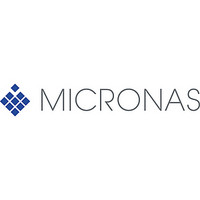CDC3205G-C Micronas, CDC3205G-C Datasheet - Page 179

CDC3205G-C
Manufacturer Part Number
CDC3205G-C
Description
Automotive Controller Family The Device is a Microcontroller For Use in Automotive Applications.the On-chip Cpu is an Arm Processor ARM7TDMI with 32-bit Data And Address Bus, Which Supports Thumb format Instructions.
Manufacturer
Micronas
Datasheet
1.CDC3205G-C.pdf
(260 pages)
- Current page: 179 of 260
- Download datasheet (3Mb)
PRELIMINARY DATA SHEET
Table 27–1:
16 (CM = End of CA). This is not necessary if the CAN-RAM
is completely filled with COs.
Communication mode (CM), identifier, data length code,
extended format flag (EXF) and remote send request flag
must be initialized in each CO. Lock flag (LCK) must be
deleted and access flag (ACC) must be set in order that the
BI may also view this CO. Transfer status flag (TS) must be
deleted so that interrupts are not initiated erroneously.
27.3.2. Handling the COs
27.3.2.1. Principles
If the user wishes to access a CO, then he must lock out the
BI from access to it. Also the BI reserves access for itself to
one CO. In this case the user may not have access. When
scanning the CA, the BI ignores inactive or locked COs; i.e. it
reads only the first byte and then jumps to the next CO.
Reservations Procedure
If the user would like to access a com. object, then he must
first set LCK. Then he must read ACC. If it is TRUE, he has
right of access. After the operation he must delete LCK.
LCK = TRUE;
if (ACC == TRUE)
LCK = FALSE;
LCK = TRUE;
while (ACC == FALSE)
/* CPU has right of access */
LCK = FALSE;
Fig. 27–5:
When the BI is accessing a com. object, it first deletes ACC
and then reads LCK. If LCK is FALSE, it has right of access.
Micronas
Module
Name
CAN0
CAN1
CAN2
CAN3
_______________ or _________________
{
/* CPU has right of access */
}
{
/* wait until BI is ready */
}
HW Options
Item
CAN0-RX input multiplexer
CAN0-TX output multiplexer
Access to a CO by the user
Module specific settings
June 12, 2003; 6251-579-1PD
Address Item
PM.U20
Initialization
CAN0-RX
CAN0-TX
CAN1-RX
CAN1-TX
CAN2-RX
CAN2-TX
CAN3-RX
CAN3-TX
ACC = FALSE;
if (LCK == FALSE)
ACC = TRUE;
Fig. 27–6:
The BI does not wait at a CO until it becomes free.
The BI scans the CA from beginning to end. After a TxTg has
been transmitted, the next TxTg entered is reported ready to
send.
It makes sense to enter the COs in the CA in order of their
priority. The priority is determined by the ID. The lowest ID
has the highest priority. If the first bits of an extended ID are
identical with a standard ID, the standard ID has higher prior-
ity. The CO with the highest priority is at the beginning of the
CA. This ensures that Tx-Tgs with high priority are transmit-
ted first when a rescan is initiated.
27.3.2.2. Configuration
A CO may be configured only in the inactive and/or locked
mode or when HACK has been set. Otherwise it can lead to
access conflicts between the user and BI.
The communication mode (CM) is determined in the configu-
ration phase. The identifiers are also entered. The flag EXF
must not be overlooked. The flag RSR and DLC determine
whether and how many data bytes will be transmitted in the
telegram. The interrupts can be permitted. In case of a
receive telegram it is necessary under certain circumstances
to set the flags MID and OW. In case of a transmit telegram,
the flag RSC must be adjusted.
27.3.2.3. Transmit Telegram
CM = Send
A transmit telegram is used to send data. How many data
bytes will be sent is fixed in the DLC. The data is entered
directly after the TD. Unused data bytes can be freely used
{
/* BI has right of access */
}
Setting
U2.1 or U4.3 special in
U2.0 or U4.2 special out
U6.1 special in
U6.0 special out
U8.5 special in
U8.4 special out
U8.3 special in
U8.2 special out
Access to a CO by the BI
CDC 32xxG-C
Enable Bit
SR0.CAN0
SR0.CAN1
SR0.CAN2
SR0.CAN3
177
Related parts for CDC3205G-C
Image
Part Number
Description
Manufacturer
Datasheet
Request
R

Part Number:
Description:
Scan rate converter using embedded DRAM technology unit
Manufacturer:
Micronas
Datasheet:

Part Number:
Description:
Video pixel decoder
Manufacturer:
Micronas
Datasheet:

Part Number:
Description:
Stereo audio DAC
Manufacturer:
Micronas
Datasheet:

Part Number:
Description:
Multistandard sound processor
Manufacturer:
Micronas
Datasheet:

Part Number:
Description:
VAD2150_Micronas.pdf
Manufacturer:
Micronas
Datasheet:

Part Number:
Description:
VPS/PDC- plus decoder
Manufacturer:
Micronas
Datasheet:

Part Number:
Description:
Teletext decoder with embedded 16-bit controller M2
Manufacturer:
Micronas
Datasheet:

Part Number:
Description:
High-end picture-in-picture ICs
Manufacturer:
Micronas
Datasheet:

Part Number:
Description:
Cost-effective picture-in-picture ICs
Manufacturer:
Micronas
Datasheet:

Part Number:
Description:
Cost-effective picture-in-picture ICs
Manufacturer:
Micronas
Datasheet:

Part Number:
Description:
Teletext Decoder with Embedded 16-bit Controller
Manufacturer:
Micronas
Datasheet:

Part Number:
Description:
Octal 8-Bit Trimmer, IC
Manufacturer:
Micronas
Datasheet:

Part Number:
Description:
Video Pixel Decoder
Manufacturer:
Micronas
Datasheet:










